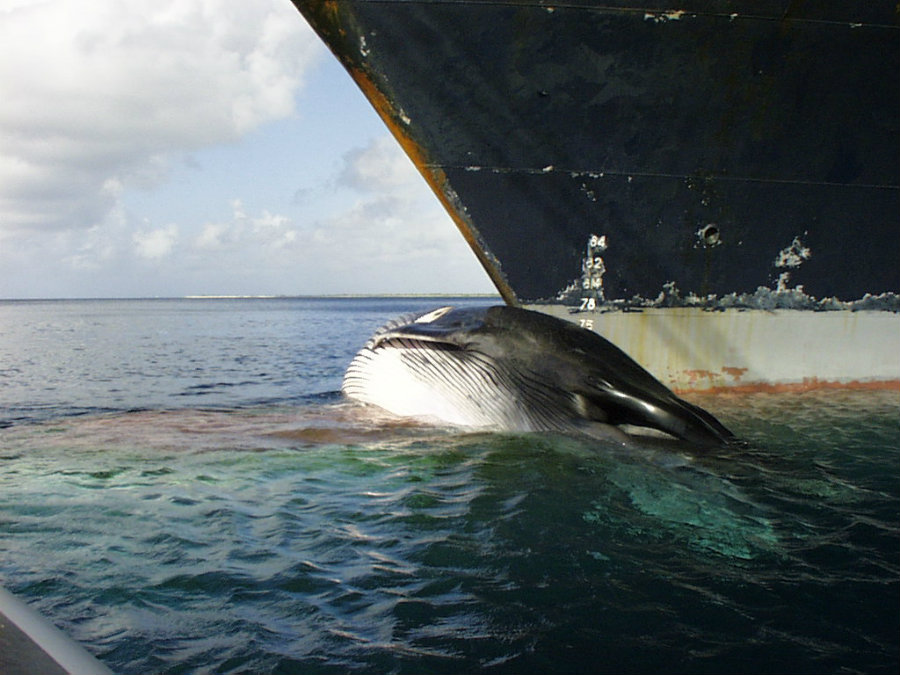According to a new study, at least 15 percent of the protected whales in the Southern Gulf of Maine have been struck by boats and other vessels. The analysis is based on injuries to 624 individual whales.
However, researchers say that the rate of the collisions between whales and boats might be higher that they estimate because they didn’t take into account the whales that are actually killed in ship strikes. The study results are based on pictures of whales taken between 2004 2013.

“Vessel strikes are a significant risk to both whales and to boaters,” said Alex Hill, the lead author of the study, who is a scientist with conservation group Whale and Dolphin Conservation, in Plymouth, Massachusetts. “Long-term studies can help us figure out if our outreach programs to boaters are effective, what kind of management actions are needed and help to assess the health of the population.”
Researchers classified 210,733 photos in five types of injuries
The study was published in the most recent issue of “Marine Mammal Science.” They said that out of the 624 individual whales review, 92 had injuries attributed to at least one vessel strike. This is the 14.7 percent of the entire whale population considered in the study. A total of 149 injuries were found.
The researchers evaluated 210,733 photos into five categories of injuries that could be related to boat collision. They took these pictures between 2004 and 2013 in a body of water just off the coasts of Massachusetts, New Hampshire, and Maine, where whales go to feed every spring.
“There are a lot of whales getting hit by small vessels, and there may very well need to be some management actions around high-density whale areas,” said Scott Kraus, chief scientist for marine mammals at the New England Aquarium.
Most of the whales had four or fewer injuries. Seven of them had at least three vessel-strike injuries, and two of them had four. Researchers couldn’t determine if multiple injuries of the whales were caused by a single strike or by many of them.
One whale calf did appear to have injuries from different collisions, based on fresh marks in various body regions that the calf didn’t have several weeks ago when first photographed.

Whale-boat collisions can be catastrophic
Researchers admitted that they didn’t think the whale-boat collision rate was so high. They believe that it might be higher because they didn’t take into account the deaths of whales by vessel strikes. These events can be catastrophic because they put the life of whales and human beings at risk. According to The Whale and Dolphin Conservation (WDC), a charity dedicated to the protection of these animals, people can be severely injured or even killed by being thrown into the sea when the vessel hits the whale. As well, when whales are hit by a large vessel, they don’t tend to survive.
Whales, such as humpbacks, are not likely to detect oncoming vessels. Researchers highlighted that humpback whales are listed as endangered under the U.S. Endangered Species Act. However, there are no regulations or guidelines to reduce the whale-boat collision. These whales might be engaged in activities such as feeding or mating and are either oblivious or may not respond to approaching ships.
As well, whales are slow swimmers, and they tend to spend a lot of time on the surface even in areas with a significant traffic of ships. Researchers expect with this research to draw attention to push regulators into the development of new guidelines on boat traffic. Furthermore, they want to extend the protection to humpbacks. As well, they want to inspire other researchers to commit to long-term studies on the matter.

Do these collisions affect the whale population?
Certainly, the number of whale-vessel strikes and its consequences is underestimated by most people. According to a 2014 study published in the journal PLoS ONE that focused on 171 blue whales in the eastern North Pacific, modifications to the shipping lanes could be necessary to reduce the likelihood of collisions with vessels.
In Alaska, 25 of 108 reported whale collisions – that were reported between 1978 and 2011 – resulted in the mammal’s death, according to a 2012 report published in the Journal of Marine Biology.
The impact that vessel strikes with whales can have in the entire whale population is not certain though some studies, including one that was published in the Marine Mammal Science magazine in 2014, said that mitigating ship strikes would not affect really the blue whale population.
Other scientists have also studied whether ship strikes have the ability to affect whale populations negatively, and the subject is a source of some debate.
According to Dave Wiley, a research coordinator for Stellwagen Bank National Marine Sanctuary, the study in Maine should have some impact on federal managers. He was not involved in the study, but he confessed they rate of injuries were troublesome.
Source: USA TODAY
